1. Frito Pie (Southwest)
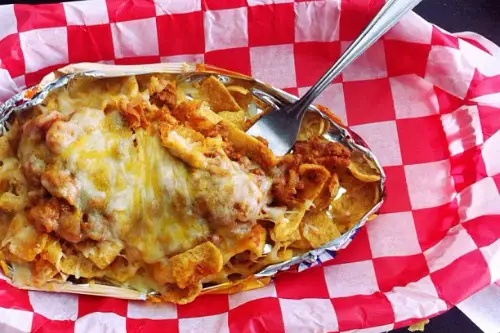
Imagine someone opening a bag of corn chips, dumping chili and cheese into it, and calling it dinner—that’s Frito Pie. It’s especially popular in Texas and New Mexico, often served right in the chip bag. Outsiders sometimes assume it’s a messy joke food, but locals know it’s a fairground and Friday-night-football classic. The combination of crunchy, cheesy, and spicy hits all the right spots.
Frito Pie reflects the Southwest’s love of bold flavors and quick, portable meals. School cafeterias have even served it for decades because it’s easy and affordable. The “bag presentation” might look chaotic, but it keeps everything contained for eating on the go. It’s snack food engineering at its finest.
2. Pickled Pigs’ Feet (Southern U.S.)
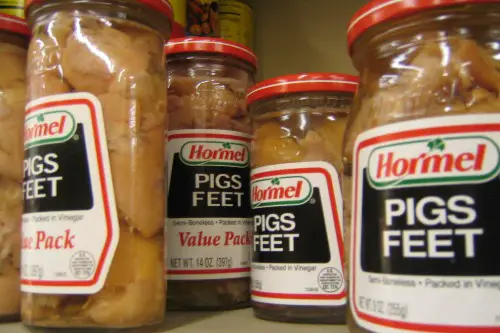
A jar of pickled pigs’ feet on a store shelf can look like a prop from a Halloween display. These are literally pigs’ trotters cured in vinegar brine, often with spices like peppercorns and cloves. They’ve been a Southern snack for generations, especially in rural areas and old-fashioned general stores. For many locals, it’s a tangy, chewy, and rich treat that’s perfect with a cold drink.
The “shock factor” comes from their very recognizable shape—you can’t mistake what part of the pig they are. But the flavor is all about vinegar bite and tender gelatin-rich meat. Pickled preservation was practical before refrigeration, making them a ready-to-eat protein source. Outsiders might laugh nervously, but Southerners know it’s just a salty, sour snack with history.
3. Koolickle (Mississippi Delta)
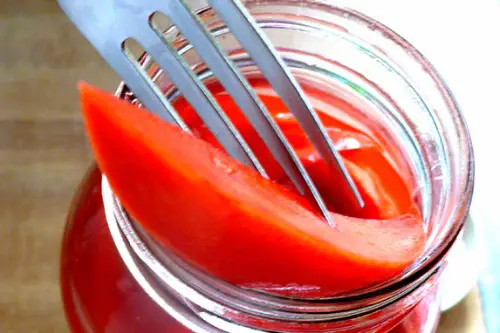
The Koolickle—pickles soaked in Kool-Aid—sounds like something invented on a dare. In reality, it’s a Mississippi Delta convenience store special, usually involving dill pickles marinated in sweet, fruity drink mix. The result is a neon-colored, sweet-and-sour snack that looks like it belongs in a science experiment. The flavor is surprisingly balanced if you like sweet-and-tart combos.
Koolickles became popular in areas where small stores sold inexpensive, flavorful snacks to kids. The bright colors and unusual taste made them memorable, and the low cost made them accessible. Outsiders often assume they’re a joke because of the vibrant red or purple hue. But locals know they’re a playful twist on an old-fashioned pickle.
4. Scrapple (Mid-Atlantic)
At first glance, scrapple looks like someone tried to make meatloaf but gave up halfway. It’s a Pennsylvania Dutch breakfast staple made from pork scraps, cornmeal, and spices, cooked into a loaf and then sliced and fried. Outsiders sometimes think it’s a dare food because “pork scraps” can sound unappetizing. But for locals, crispy scrapple with eggs is a cozy, nostalgic plate of comfort.
The key is the texture contrast—crunchy outside, soft inside—which makes it oddly addictive. Scrapple’s roots go back to frugality and not wasting any part of the animal. While skeptics focus on the “leftover bits” aspect, many home cooks prize it as the ultimate savory breakfast side. It’s proof that what looks questionable can actually taste like tradition.
5. Chislic (South Dakota)
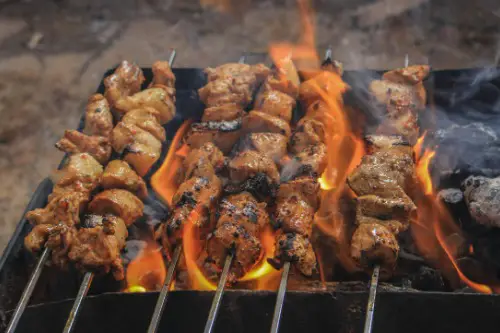
Chunks of deep-fried, skewered meat might not sound strange—until you realize they’re often served with only a sprinkle of garlic salt and crackers. Chislic is a South Dakota favorite, typically made from lamb or beef. Outsiders expecting elaborate seasoning might think someone forgot half the recipe. But locals love its simplicity and hearty flavor.
The dish has roots in Russian and German immigrant cooking, where meat was skewered for ease and cooked quickly. It’s often eaten at bars, fairs, and backyard gatherings. Chislic’s minimal seasoning is intentional, letting the meat’s natural flavor shine. It’s rustic, unfussy, and a point of state pride.
6. Boiled Peanuts (Southeast)

If you’ve only had peanuts dry-roasted, the sight of them floating in briny water might look like a kitchen mishap. Boiled peanuts are a staple roadside snack in the Southeast, especially in Georgia and South Carolina. The shells get soft, and the peanuts inside become tender and salty. They’re often sold warm in paper bags by roadside vendors.
This snack started as a way to use freshly harvested “green” peanuts that can’t be roasted well. The long simmer in salted water transforms their texture completely. Outsiders sometimes mistake the mushiness for overcooking, but locals crave that soft, briny bite. They’re the ultimate road trip pick-me-up for Southern travelers.
7. Potato Candy (Appalachia)
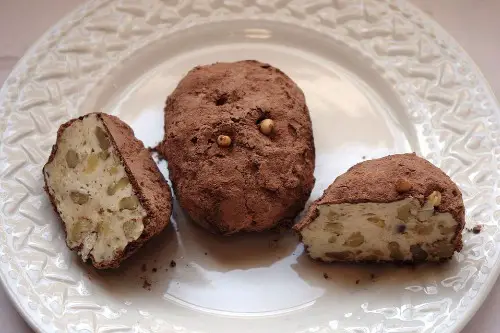
Candy made with potatoes sounds like a prank from a Depression-era cookbook. But Appalachian potato candy is a beloved no-bake treat combining mashed potatoes, powdered sugar, and peanut butter. The potato is just a binder—it’s not about the flavor. Outsiders may raise an eyebrow until they realize it tastes like peanut butter fudge.
The recipe came about during times when butter and cream were scarce, but potatoes were plentiful. It’s a thrifty, sweet, and surprisingly rich candy. The peanut butter swirl in the middle makes it look like a homemade roll cake. It’s proof that necessity really is the mother of invention.
8. Goetta (Cincinnati)
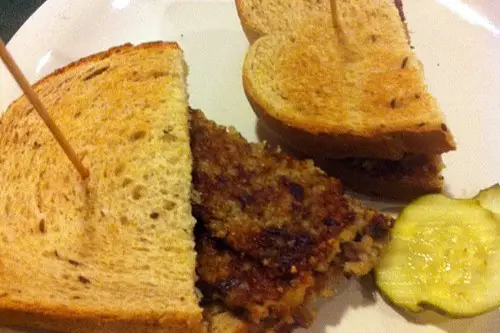
Goetta might seem like a Midwestern cousin to scrapple—meat mixed with grains and fried into patties. In Cincinnati, it’s a German-American breakfast essential made from pork, beef, steel-cut oats, and spices. Outsiders often focus on the oats, which sound like a weird breakfast crossover. But locals prize its crispy edges and savory depth.
It originated as a way to stretch meat with grains, a tradition brought over by immigrants. Goetta has such a following that Cincinnati even has a festival called Goettafest. The oats add a unique texture and nutty flavor. For many, it’s not just food—it’s a cultural anchor.
9. Akutaq (Alaska)
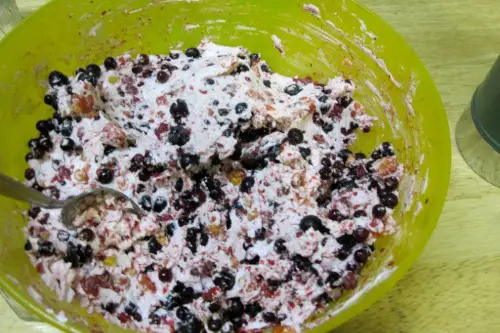
Also called “Eskimo ice cream,” Akutaq can involve berries, sugar, and… animal fat or fish. To someone unfamiliar, it sounds like two separate dishes that got accidentally mixed. In reality, it’s a traditional Alaska Native food, originally made to provide high energy in extreme cold. Modern versions sometimes swap in vegetable shortening for seal or reindeer fat.
The dish can be sweet with blueberries and sugar or savory with fish. Its whipped texture is light despite its richness. Outsiders may balk at the idea of eating fat as dessert, but it’s rooted in survival and celebration. For those who grew up with it, Akutaq tastes like home and heritage.
10. Beaten Biscuits (Arkansas/Missouri)
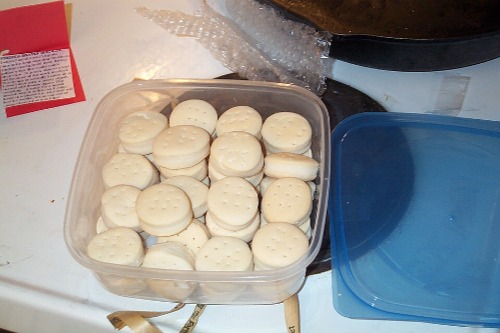
Unlike fluffy Southern biscuits, beaten biscuits are dense, hard, and slightly sweet. They’re made by literally pounding the dough with a mallet or rolling pin for up to 30 minutes. Outsiders might assume the name is a joke, but it’s just the traditional method. The end result is a biscuit that can last for weeks without spoiling.
They were once popular travel food and often served with ham. The long beating develops the gluten, giving them their chewy texture. In modern kitchens, they’re more of a novelty, but some bakeries still make them for tradition’s sake. They’re a taste of 19th-century ingenuity.
11. Spam Musubi (Hawaii)
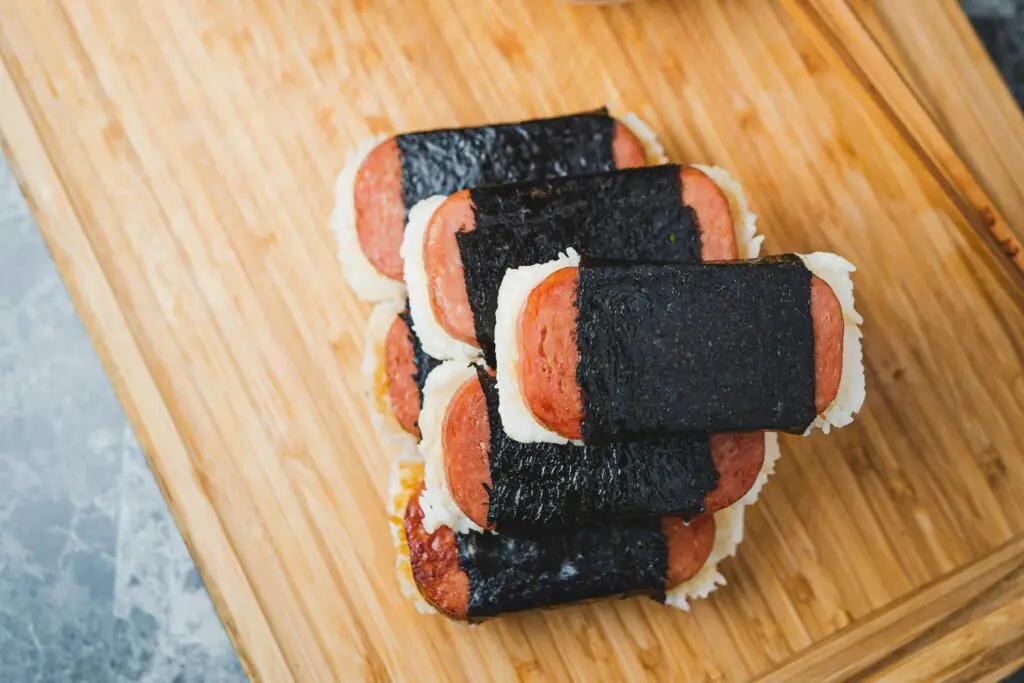
At first glance, Spam Musubi looks like sushi that went through a convenience store filter. It’s a block of rice topped with a slice of fried Spam, wrapped with a strip of nori. Outsiders sometimes think it’s a novelty item, but in Hawaii, it’s an everyday snack sold at gas stations and grocery stores. The salty-sweet marinade on the Spam makes it addictively good.
Spam became a staple in Hawaii during World War II, when fresh meat was scarce. Locals incorporated it into Japanese-style rice dishes, creating musubi. Today, it’s a beloved grab-and-go lunch or beach snack. Outsiders may laugh at the concept, but it’s a true fusion of history and convenience.
12. Lutefisk (Upper Midwest)
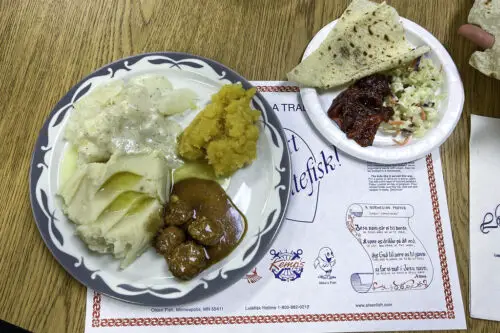
Lutefisk’s reputation often precedes it—dried whitefish rehydrated in a lye solution sounds like something from a chemistry lab. In reality, it’s a Scandinavian heritage dish brought by immigrants to Minnesota and Wisconsin. Outsiders tend to focus on the gelatinous texture, which can be off-putting. But for many, it’s tied to holiday traditions and community dinners.
Preparing it is a labor-intensive process that dates back to preserving fish without refrigeration. The lye is thoroughly rinsed out before cooking, leaving a mild flavor. It’s usually served with butter, cream sauce, or potatoes to round it out. Lutefisk dinners remain a point of pride for certain church and cultural groups.
This post 12 Regional Snacks That Outsiders Mistake for Pranks was first published on American Charm.


